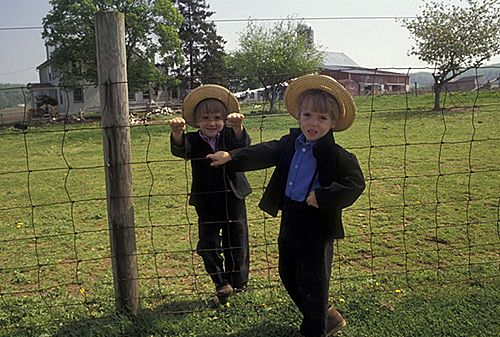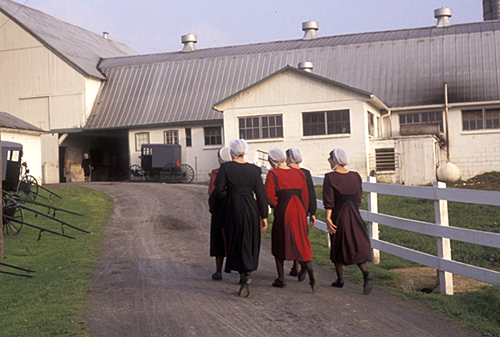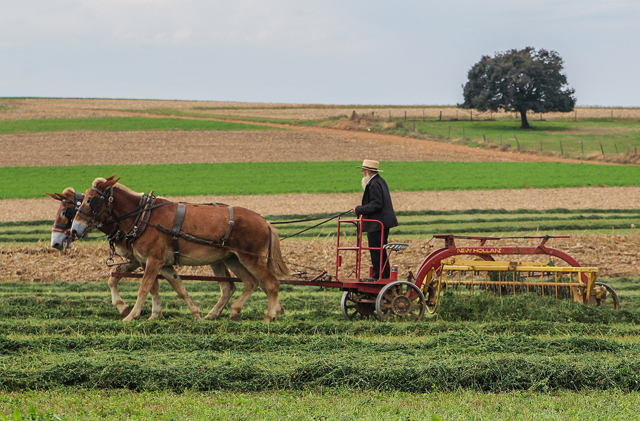According to Patrick Donmoyer, Pennsylvania Dutch, which is spoken by the Amish, is “considered the fastest-growing small-minority language in the United States.” Donmoyer is Director of the Pennsylvania German Cultural Heritage Center at Kutztown University; he shared a lot of information about his favorite subject with Jason Nark, who published an article on the subject in the Pottstown, PA, Mercury.

The growth of the language, he said, is directly attributable to the growth of the Amish population. Donmoyer said that about 400,000 people now speak it, primarily in southeastern and central Pennsylvania plus Ohio and Indiana. It is also spoken, still, by thousands of non-Amish and non-Mennonite people in Pennsylvania.
Doug Madenford, a native of Reading, PA, grew up with Pennsylvania Dutch spoken on his family’s farm. He told Mr. Nark that they are “hardworking, proud and stubborn people with an agricultural background.” He said that the Pennsylvania Dutch are unique—they have their own foods, culture, and arts. They have fought in the wars of their country—he was speaking about the ones who were not Amish—and they advocated the abolition of slavery. They firmly adhere to their values, he emphasized. He teaches German in the Keystone Central School District near Lock Haven, Pennsylvania.

Donmoyer told the Mercury that the average age of speakers of the language who come from Amish or Mennonite backgrounds is 17. Speakers from other backgrounds are, on average, 75 years old. Madenford indicated that he speaks Pennsylvania Dutch to his kids, a daughter who is 5 and a son who is about to turn 3.
Donmoyer and Madenford learned the language from their grandparents. They edit and publish a newspaper and its associated website, titled, in Pennsylvania Dutch, Hiwwe wie Driwwe (“Over here, like over there”); it is dedicated to promoting the language. Madenford said that a lot of young people contact him expressing a desire to reconnect with their heritage and language.

He made it clear that the language has nothing to do with the inhabitants of the Netherlands. Speakers of Pennsylvania Dutch were originally from the Rhine Valley and the Palatinate region of Germany. The language has been called “Dutch,” not because of a corruption of “Deutsch,” a word for the German language itself, but because the word was derived from an Old English term for speakers of Low and High German. It was applied to them when they were first settling in Pennsylvania.
The two men explained that because the US fought two wars against Germany in the 20th century, many Pennsylvania Dutch speakers—the non-Amish, non-Mennonite ones—decided to stop teaching their language to their children because of anti-German sentiments. But both advocated more effective promotion of the Pennsylvania Dutch heritage by the state, perhaps through some targeted advertising in southwestern Germany that might help draw tourists.
Donmoyer went on to extol the cultural heritage of the Pennsylvania Dutch because they have, at least to some extent, been able to retain their language. In comments that should resonate with the broader discussions in the United States about the cultures of immigrant peoples, he added that the Germans retained their language “because keeping your culture was a way of being American. They were emphasizing their American-ness by saying, ‘We have the right to be who we are.’”